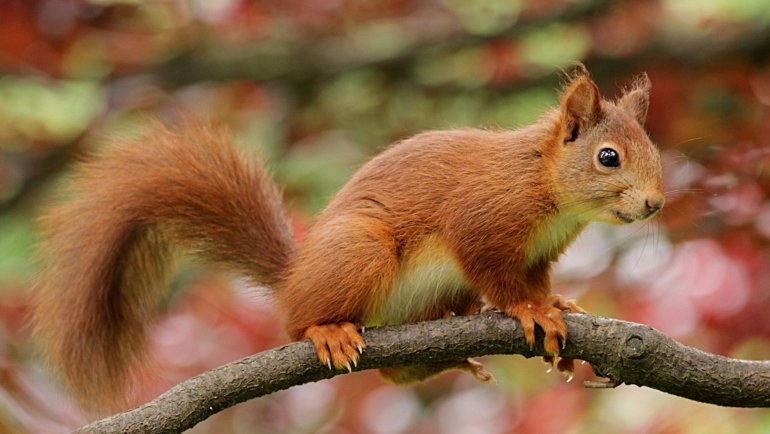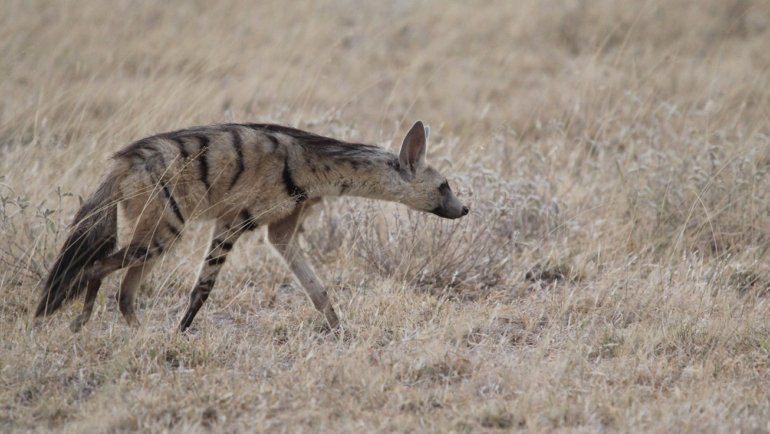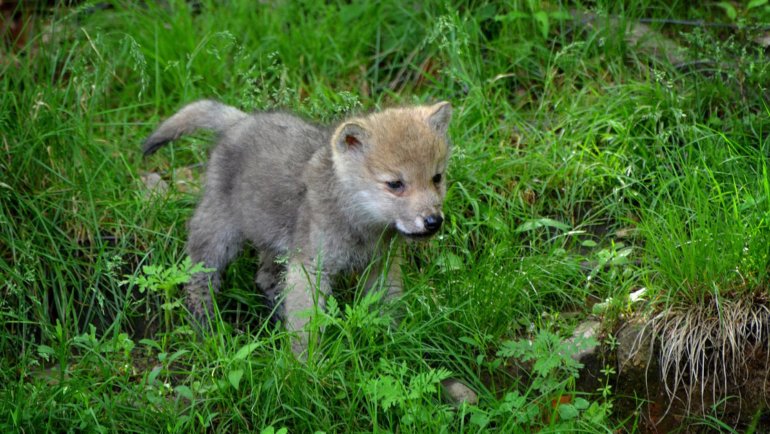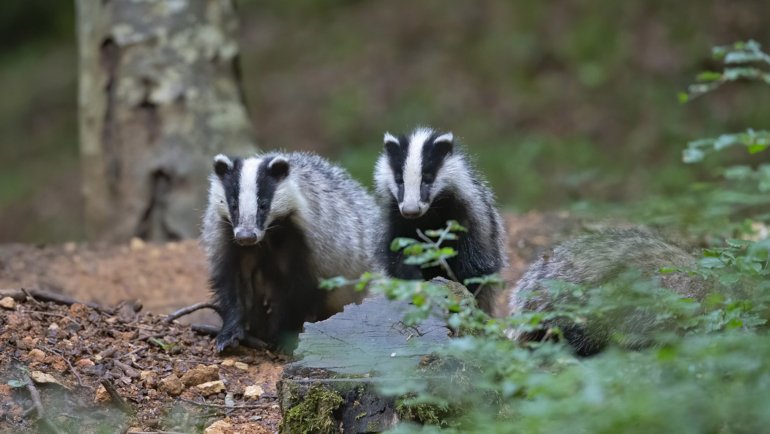Welcome to the intriguing world of the Canada lynx, a charismatic feline that roams the boreal forests of North America. Renowned for its tufted ears, keen eyesight, and exceptional agility, the Canada lynx has long captivated the imagination of wildlife enthusiasts and researchers alike.
In this comprehensive article, you’ll discover a wealth of knowledge about this fascinating creature, from its taxonomy and physical characteristics to its unique behavior and conservation status. So read on and get ready to dive deep into the life and lore of the Canada lynx.
The Canada Lynx at a Glance
Classification
| Kingdom: | Animalia |
| Phylum: | Chordata |
| Class: | Mammalia (Mammals) |
| Order: | Carnivora |
| Family: | Felidae |
| Genus: | Lynx |
| Species: | L. canadensis |
Essential Information
| Average Size: | 31-41 inches (80-105 cm) |
| Average Weight: | 18-24 lbs (8-11 kg) |
| Average Lifespan: | 12-17 years |
| Geographical Range: | North America |
| Conservation Status: | Least Concern (IUCN Red List) |
Species and Subspecies
The Canada lynx is a species within the Lynx genus, which also includes the Eurasian lynx, the Iberian lynx, and the bobcat. Despite its close resemblance to the bobcat, the Canada lynx can be distinguished by its longer legs, larger paws, and tufted ears.
There are no recognized subspecies of the Canada lynx. However, genetic research indicates some variation among regional populations, suggesting a nuanced understanding of subspecies may emerge with future studies.
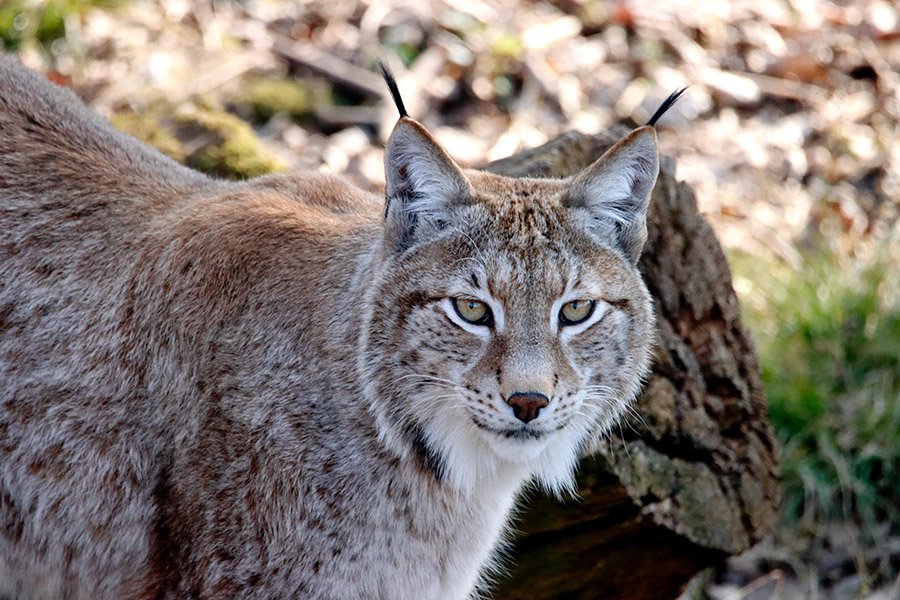
Description
The Canada lynx is an awe-inspiring creature with physical adaptations that make it well-suited to its environment. The animal typically has a medium-sized body ranging between 31 to 41 inches (80-105 cm) in length, not including the tail, and weighs around 18 to 24 pounds (8-11 kg). Its fur is dense and varies in color from greyish-brown to a more silvery hue, providing it with excellent camouflage.
Perhaps the most recognizable features of the Canada lynx are its tufted ears and large, furry paws. The tufts on its ears may serve to enhance its keen sense of hearing, while its large paws act like natural snowshoes, allowing the animal to walk with ease on snowy surfaces. It also has long legs, which are an advantage when chasing prey in deep snow.
Sexual dimorphism is not particularly prominent in the Canada lynx, with males being only slightly larger and heavier than females.
Habitat and Distribution
The Canada lynx is predominantly found in the boreal forests of North America, covering regions from Alaska and Canada to some northern parts of the United States such as Maine and Minnesota.
These forests provide the thick cover and prey base necessary for the lynx to thrive. The animal is well-adapted to cold, snowy environments and prefers locations with high densities of its primary prey, the snowshoe hare.

Behavior
The Canada lynx is largely a solitary and nocturnal animal, active mainly during the early morning and late evening. The species has a territorial nature, with males generally occupying larger territories than females. While not overly aggressive, the Canada lynx will mark its territory with scent marks to communicate boundaries to other lynxes.
In terms of communication, Canada lynxes use a range of vocalizations, including growls, hisses, and “mew” sounds, particularly during the mating season.
Their large eyes give them excellent night vision, which is crucial for their nocturnal hunting habits. These cats are excellent climbers and swimmers, although they prefer to stay on land.
Diet and Feeding Behavior
The Canada lynx is predominantly a carnivore, relying heavily on a diet of snowshoe hares. In fact, the population dynamics of the lynx are closely tied to the abundance of this particular prey.
When hare populations are high, lynx numbers generally increase as well. Besides hares, they also eat small mammals like squirrels, birds, and occasionally larger prey such as deer.
The hunting style of the Canada lynx is one of stealth and ambush. Using its keen senses of sight and hearing, it stalks its prey silently and pounces when the time is right. The lynx’s large paws provide good traction and allow it to move silently and efficiently through its snowy habitat.
Predators
Adult Canada lynxes have few natural predators due to their size and aggressive nature when threatened. However, they can sometimes fall prey to larger predators like wolves, mountain lions, or bears. Young lynxes are more vulnerable and can be targeted by eagles, owls, and even smaller carnivorous mammals like foxes or coyotes.
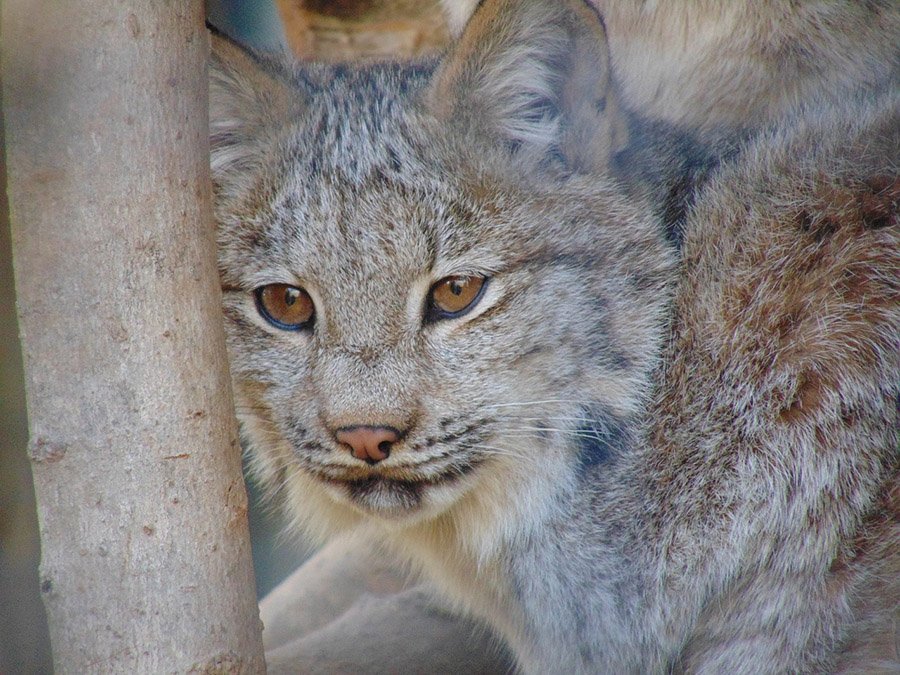
Reproduction and Life Cycle
The mating season for Canada lynxes occurs between March and May, with the gestation period lasting about 60 to 65 days. Typically, a female will give birth to a litter of 1 to 5 kittens. The kittens are born blind and helpless but develop quickly, opening their eyes after about 14 days and beginning to eat solid food at around 6 weeks.
Mother lynxes are particularly protective of their young and will nurse them for about three months. The kittens will stay with their mother for up to one year, learning vital survival and hunting skills. After this period, they will disperse to establish their territories.
Conservation and Threats
The Canada lynx is currently listed as a “Least Concern” species by the International Union for Conservation of Nature (IUCN), although in some areas, such as the United States, they are considered “Threatened” under the Endangered Species Act.
The main threats to the lynx include habitat loss due to logging and human development, as well as climate change, which impacts the distribution of snowshoe hares, their primary food source.
Conservation efforts are ongoing and often involve habitat restoration and legal protections. Various programs aim to monitor lynx populations and their health. Some of these programs involve radio-collaring lynxes to track their movements and better understand their behavior and needs.
Fun Facts
- The Canada lynx has feet that function almost like natural snowshoes, helping them move efficiently in their snowy habitat.
- Unlike other cats, the Canada lynx can’t roar. Instead, they communicate through mews, growls, and hisses.
- The population of the Canada lynx rises and falls in correlation with the population of snowshoe hares, its primary prey.
- The Canada lynx has excellent night vision, thanks to a higher number of light-sensitive cells in the retina.
- In folklore, the lynx is often considered a keeper of secrets and a creature of great intuition.
Frequently Asked Questions
Why is the Canada lynx so dependent on the snowshoe hare?
The Canada lynx has specialized in hunting snowshoe hares, which are abundant in its natural habitat. The lynx’s physiology, from its large paws to its keen senses, is finely tuned to capture this specific prey.
How do Canada lynxes communicate with each other?
They communicate through a range of vocalizations like mews, growls, and hisses. They also mark their territory with scent markings.
What is the difference between a Canada lynx and a bobcat?
While they look similar, Canada lynxes are generally larger and have longer ear tufts, bigger paws, and a shorter, black-tipped tail. They also have different habitat preferences, with the lynx preferring colder, snowier regions.
How long do Canada lynxes live?
In the wild, Canada lynxes can live up to 14 years, although some have been known to live up to 20 years in captivity.
Are Canada lynxes good swimmers?
Yes, Canada lynxes are capable swimmers, although they prefer to avoid large bodies of water when possible.
